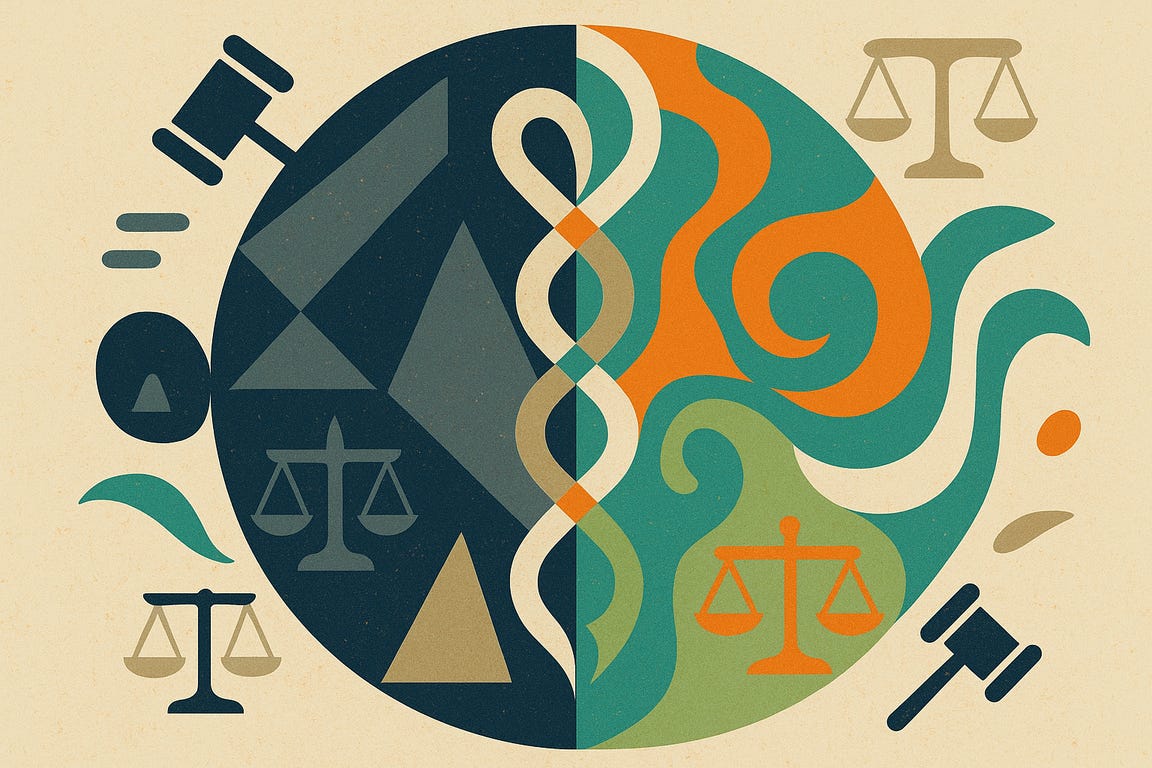Standing Together in Chiles v. Salazar
Law and Collegiality at the Supreme Court
Chiles v. Salazar, the recently argued conversion therapy case coming out of Colorado, featured a late-breaking standing issue. After the lower courts had found standing, the state included a novel standing objection in a footnote buried deep within its response brief. The state essentially argued that its law applied much more narrowly than previously understood, such that the plaintiff’s intended conduct would not run afoul of it.
Because this issue arose so late and so cursorily, the briefing was a bit muddled. Justice Gorsuch saw a way through the haze: even if Colorado’s strained and dilatory interpretation of its own law were correct, the plaintiff still seemed to run afoul of it.
Following a similar train of logic, Justice Sotomayor sought to identify the precise conduct that the plaintiff desired to undertake, so that the state could “disavow enforcement,” thereby eliminating standing (or perhaps rendering the case moot).
Justices Gorsuch and Sotomayor accordingly asked a series of probing questions focused on this precise issue, with some other justices joining in.
Toward the end of the oral argument, Justice Gorsuch cited specific paragraphs of the plaintiff’s complaint—really, specific words within those paragraphs—and asked Colorado’s Solicitor General whether they described a violation even under the state’s new interpretation. The following exchange then occurred:
JUSTICE GORSUCH: And that would give her standing?
MS. STEVENSON: That would.
JUSTICE GORSUCH: Okay.
JUSTICE SOTOMAYOR: Because you’re not disavowing that?
MS. STEVENSON: No.
JUSTICE SOTOMAYOR: Okay. So that settles the standing question.
CHIEF JUSTICE ROBERTS: Thank you, counsel.
By all appearances, Justice Sotomayor acknowledged that her concerns regarding standing had been completely addressed. She accordingly went out of her way to note as much, thereby placing a punctuation mark at the end of her and Justice Gorsuch’s interrelated lines of questioning.
To my mind, this incident is a model of how good judging is done. Two justices associated with different ideological camps calmly focused on the precise legal issue and relevant facts, working together to figure out the right answer.
Justice Sotomayor’s final remark in this exchange deserves special praise. I understand that she may think differently after reflection; no oral argument statement is truly final. But it is still refreshing for a justice to acknowledge, candidly and without ego, that the legal result is what the legal result is—even if that outcome is in some tension with the justice’s initial inclination or ideological association. By taking that added step, Justice Sotomayor implicitly invited her colleagues to act similarly.
This exchange is also noteworthy because it is something of a retread of a standing controversy associated with 303 Creative v. Elenis. Decided in 2023, that case, too, involved a First Amendment lawsuit against Colorado. Moreover, the plaintiff in 303 Creative was represented by the same organization as the plaintiff in Chiles. And the majority and dissenting opinions in 303 Creative were respectively authored by—yes—Justices Gorsuch and Sotomayor.
In 303 Creative, no justice argued against standing, but many commentators raised unfounded complaints about standing after the decision issued.
In the immediate wake of the discourse on 303 Creative, I worried that liberals, including liberal justices, would have an incentive to make exaggerated standing complaints of the kind that were then in circulation. Playing up standing concerns would, it seemed, resonate with certain audiences.
To some extent, the Chiles oral argument bore out my worry. Colorado’s belated standing objection echoed the post-303 Creative discourse, including by emphasizing that the state had never enforced the law against the plaintiff. And the standing issue initially attracted ideologically inflected attention at oral argument.
Justices Sotomayor and Gorsuch then flipped the script.



Notable too that the justices sit next to each other. From the one argument I've attended (Ames v. Ohio Dep't of Youth Services), they have pretty great rapport. Were whispering to each other quite a lot.
If Chiles does not tell kids they “must only” exhibit and/or posses cis/het identities, then she doesn’t have standing. That’s what the law prohibits. Conversion Therapy’s purpose is to churn out cis/hetero-normative people, regardless of patient goals. Patients literally have no say in the matter.
If the laws are struck, licensed professionals can rob agency from any patient with First Amendment protections.